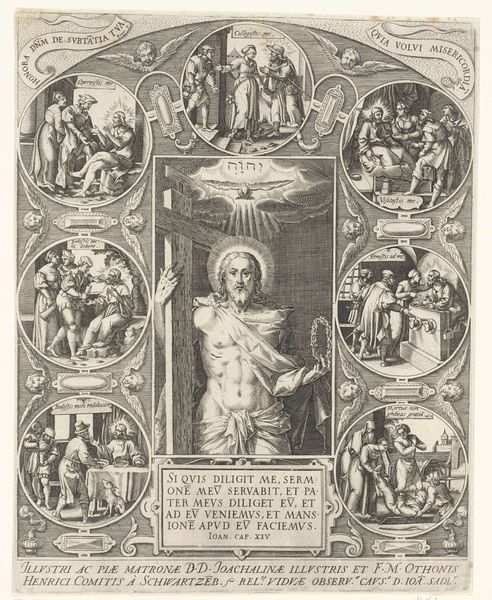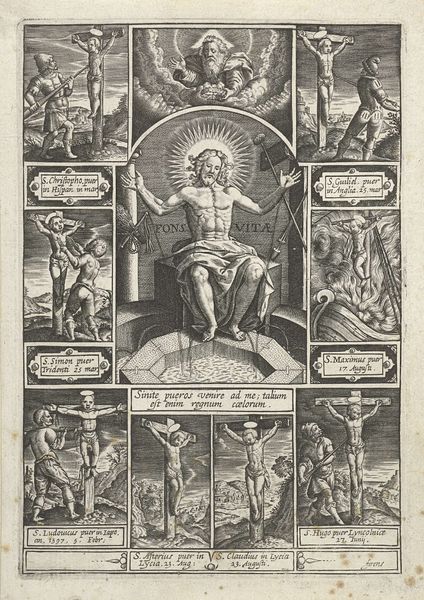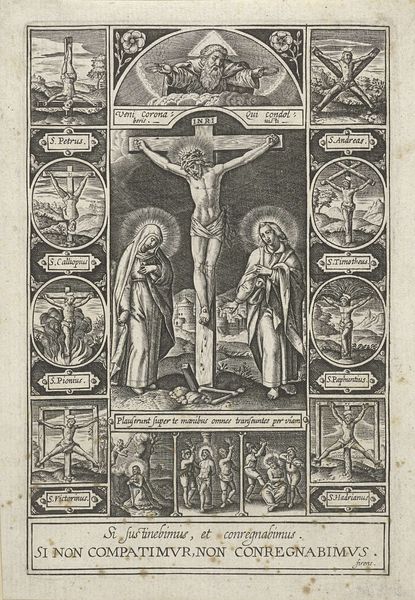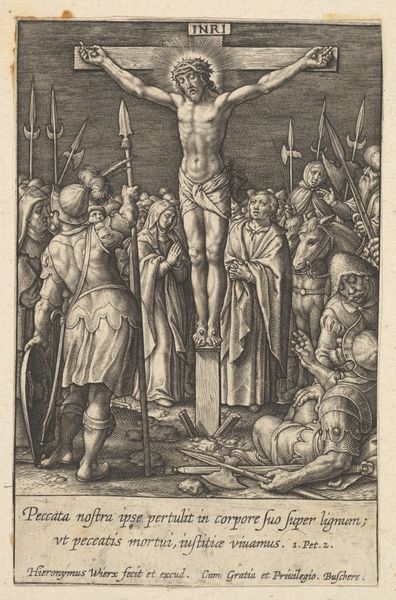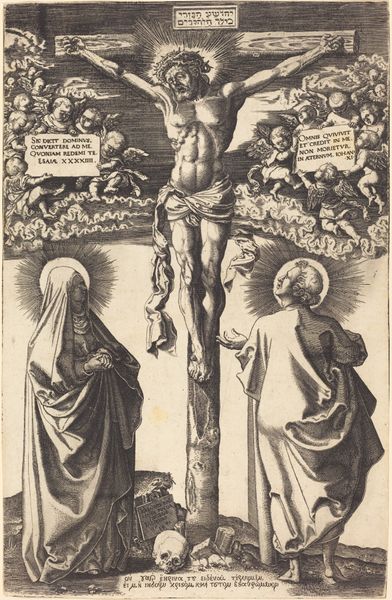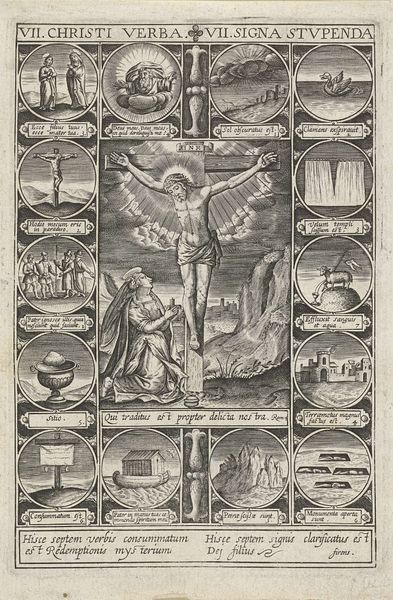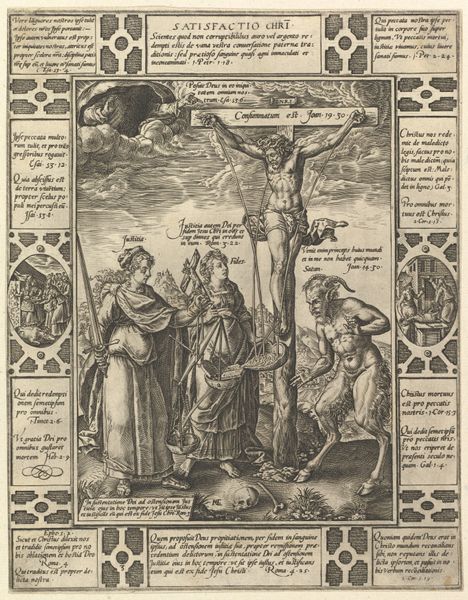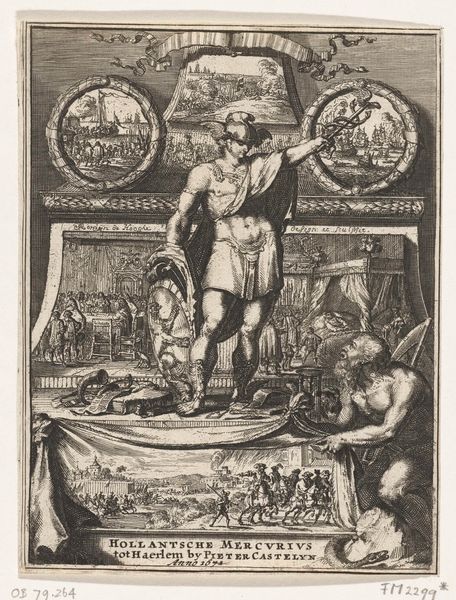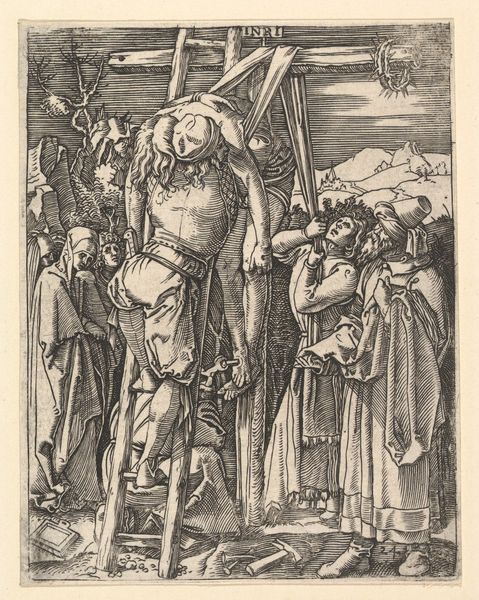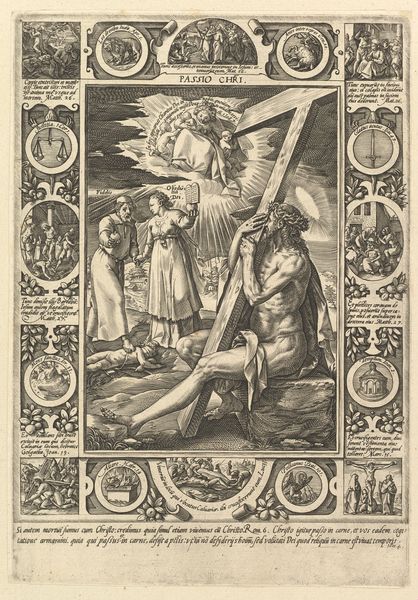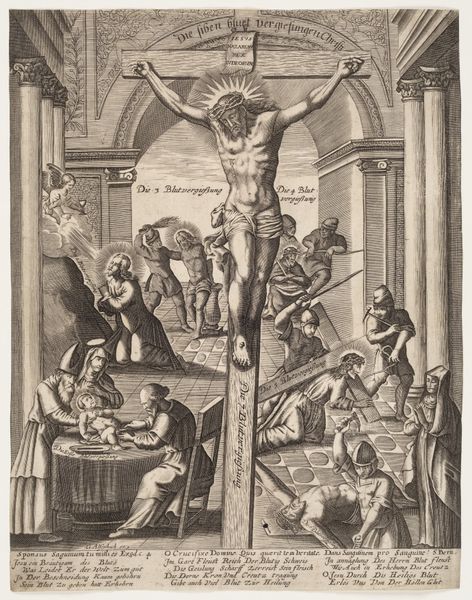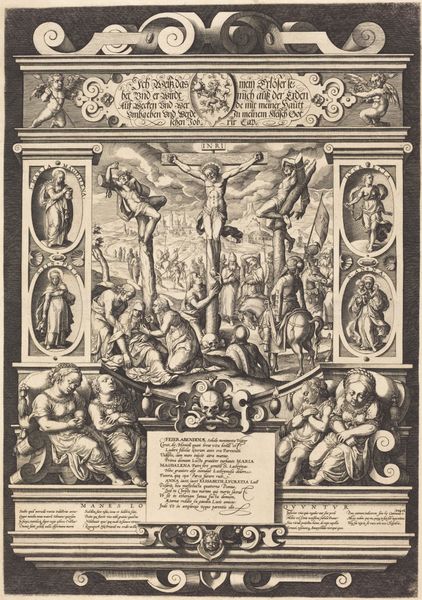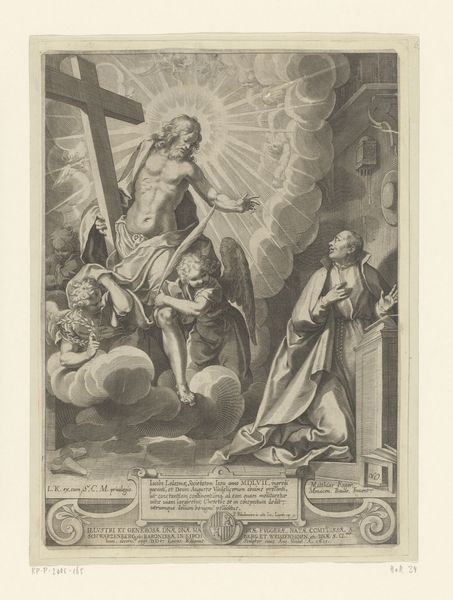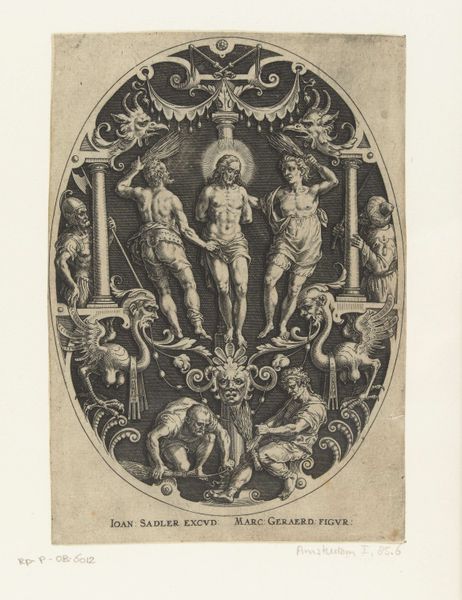
Christus met het kruis en de Werken van Barmhartigheid c. 1580 - 1590
0:00
0:00
print, ink, pen, engraving
#
pen drawing
# print
#
pen illustration
#
mannerism
#
ink
#
pen
#
history-painting
#
engraving
Dimensions: height 443 mm, width 344 mm
Copyright: Rijks Museum: Open Domain
Curator: Looking at this, my first thought is of almost architectural, structured grief. Editor: Well, you've nailed a starting point. This print, "Christus met het kruis en de Werken van Barmhartigheid," created around 1580-1590 by Hendrick Goltzius, really captures the ethos of its time. It's currently held at the Rijksmuseum, and the title translates to Christ with the Cross and the Works of Mercy. What is striking, besides grief, I mean? Curator: I see... well, Goltzius makes Christ a real figure, a strongman, rather than an ethereal savior. Yet, He's presented within this frame of human suffering... almost like a showcase for empathy. The cross itself looks less a symbol of death, more of an implement. It feels dynamic, about movement and not the standstill of crucifixion. It reminds me, strangely, of seeing social action as spiritual practice... like my aunt, but Dutch and circa 1590! Editor: Your aunt would love that. And you are right, Goltzius wasn't interested in illustrating an historical episode, but was illustrating very concrete acts of mercy. His representation is deliberately direct to align with then-current societal expectations. He wanted the viewers to interpret these scenes of caring and incorporate this knowledge into everyday conduct. The works of mercy surround a central image of Christ carrying the Cross. These are meant to be witnessed, practiced, made tangible in how one relates to those in need. Curator: So, almost like early propaganda, but for good! Seeing the works surrounding Him reinforces the divine connection to practical kindness, really cementing this philosophy of everyday virtue... So that even an art-dork like myself would go home after seeing this, maybe take out the garbage or something... Editor: Exactly, to offer alms and shelter the homeless. To visit the sick and those in prison. It’s art used to socially orchestrate specific charitable actions that can shift an entire societal infrastructure towards kindness. It suggests these duties of social obligation as pathways towards religious and personal absolution. Curator: That’s what hits me here, that urgent moral directive mixed with... I hate to use the word, but the compositional virtuosity is stunning. It elevates it past simple didacticism. It’s a really profound marriage. Editor: I agree. Considering this artwork allows me to appreciate a history of intentional charity that's often overshadowed in our current era, while it allows me to connect to it personally on a more instinctual and intuitive plane.
Comments
No comments
Be the first to comment and join the conversation on the ultimate creative platform.
